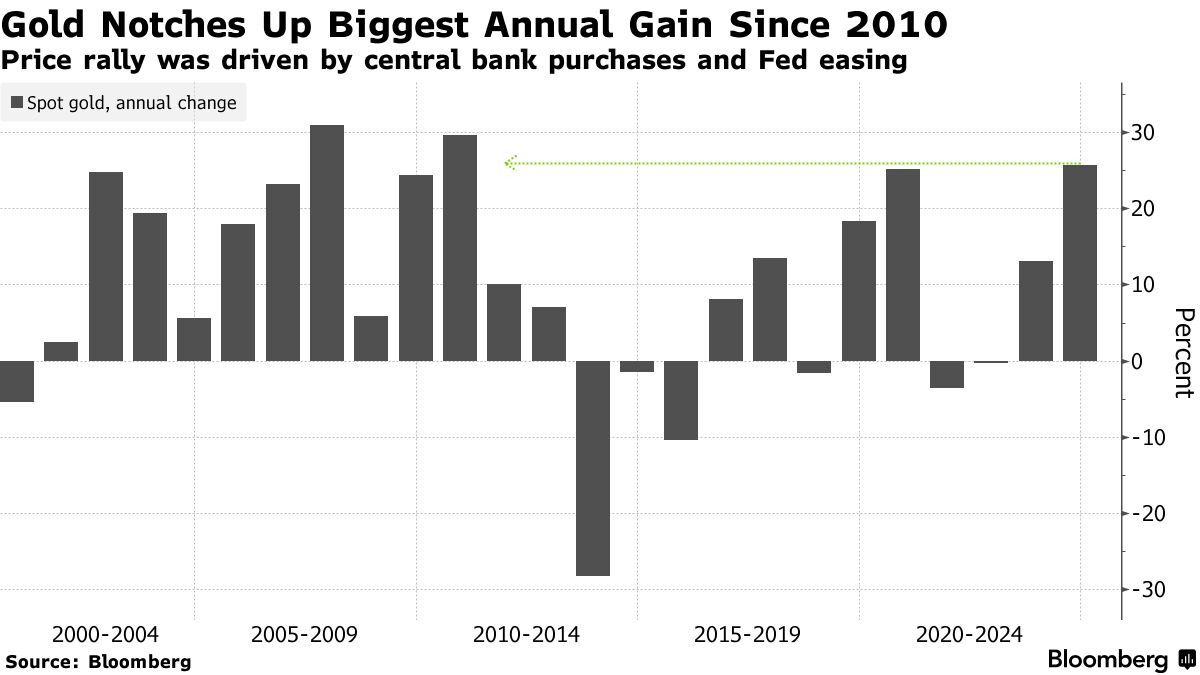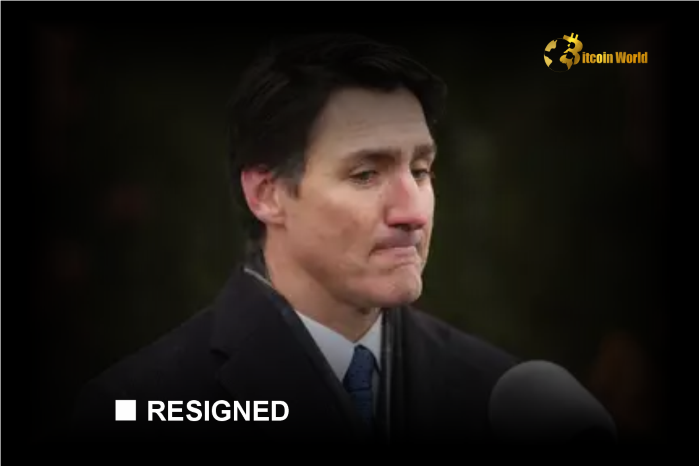Gold delivered its strongest annual performance since 2010. The metal surged 27% in 2024 to reach record highs of nearly $2,800 per ounce after Trump’s won as POTUS. The rally was also driven by large-scale central bank purchases, Federal Reserve monetary easing, and gold’s status as a safe haven amid geopolitical tensions, including conflicts in Ukraine and the Middle East.
According to Bloomberg market analysts, the key factors driving gold’s strong performance in 2024 could stay true deeper into the new year. However, investors are now preparing for the potential economic shifts of Donald Trump’s second term.
The new administration’s policies on trade, inflation, and the global economy are expected to play significant roles in shaping market sentiments. This uncertainty has had investors on a new trading path. Traders are buying gold to safeguard their wealth and hedge against possible economic downfalls.
Global central bank purchases and 2025 monetary policy
Central banks, particularly in China and other emerging markets, played a significant role in driving gold’s demand last year. Their sustained buying underpinned gold’s rise, complemented by the Federal Reserve’s monetary easing, which made non-yielding assets like gold more appealing to investors.
Darwei Kung, head of commodities at DWS Group, sees these trends continuing into 2025. He projects gold prices will hit $2,800 by the end of 2025.
Kung noted that gold remains a critical hedge against risks posed by new trade policies under President Donald Trump’s second term, which could escalate trade tensions and increase inflationary pressures.
Analysts also noted that key buyers such as China could increase gold purchases during periods of local currency weakness. The country holds substantial dollar reserves and has a strategic interest in market diversification.
They highlighted similar patterns presented during past episodes of yuan depreciation. To that end, boosting gold reserves can help bolster confidence in the Chinese currency.
Trump’s victory alters the gold and crypto market
Gold’s momentum faltered following the November US presidential election, as the dollar strengthened and the stock market rallied in response to Trump’s victory. Bitcoin also gained, temporarily diverting investor attention from gold.
However, analysts warn that Trump’s proposed tariffs and trade policies could strain economic growth and create inflationary challenges. These developments may reinforce gold’s appeal as the choice asset for investors.
President-elect Trump’s proposal to establish a strategic Bitcoin reserve by using federal funds has sparked sharp criticism, particularly from long-time gold advocate Peter Schiff.
On December 13, Schiff took to the social media platform X to condemn the idea. He called it “the single most fiscally irresponsible thing the U.S. government can do.” He further declared, “What you want to do to our gold reserve is not just bad policy, it’s treason.”
Despite Trump’s crypto-forward agenda, Schiff has doubled down on his support for gold, pointing to its steady rise in 2025. On January 2, Schiff highlighted that gold prices climbed $34 on the first trading day of the year, recovering most of December’s losses despite a strong Dollar Index.
#Gold rose $34 on the first trading day of 2025, recovering almost all of December's losses, despite a sharp rise in the Dollar Index. #Oil built on recent gains while major #StockMarket averages fell. These moves likely indicate that 2025 will not play out as investors expect.
— Peter Schiff (@PeterSchiff) January 2, 2025
He also contrasted the metal’s stability with Bitcoin, dismissing its recent surges in 2025 as insignificant. “Bitcoin is still below $100K and looks like it’s headed lower. So don’t get too excited,” he responded to an X user touting the cryptocurrency’s gains.
Meanwhile, Bloomberg Intelligence’s chief commodity strategist, Mike McGlone, pointed to gold’s robust performance in 2024, where it gained 26% by year-end. Sharing insights on X, McGlone suggested gold could outperform the S&P 500 in 2025, particularly if Bitcoin’s growth falters.
He added that gold might attract investors from the stock market. Schiff emphasized its potential “upper hand” in the current economic climate.
Goldman Sachs lowers gold price forecast
Goldman Sachs adjusted its forecast for gold in 2025. The corporation has delayed its $3,000-per-ounce target to mid-2026. Analysts Lina Thomas and Daan Struyven attributed the prediction change to weaker-than-expected ETF flows in December. Also, the market has seen a lower starting price for 2025.
In their report, the analysts highlighted a balancing act between reduced speculative demand and continued central bank purchases. They predict central banks will sustain monthly gold purchases averaging 38 tons through mid-2026. This purchasing trend will remain a key factor in shaping long-term prices.
Moreover, Goldman Sachs economists predict 75 basis points of interest rate cuts in 2025. The prediction is down from their previous forecast of 100 basis points. The revised outlook reflects expectations of lower inflation. This comes with the bank expressing skepticism that policy changes under a second Trump administration will drive interest rates higher.
Land a High-Paying Web3 Job in 90 Days: The Ultimate Roadmap










